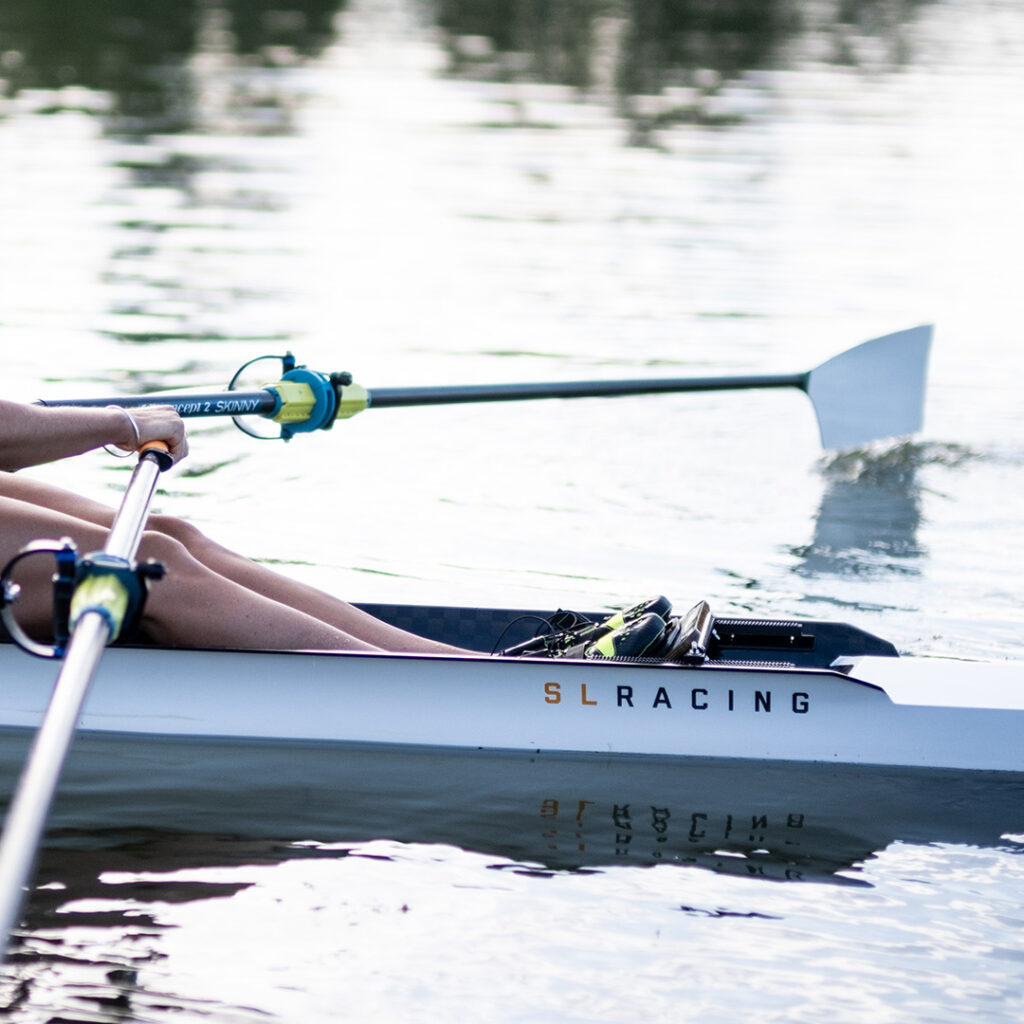Pitch. It’s a funny little word that you’ll hear rowers and coaches throw around at the boat park. Some will complain that their whole rowing stroke is being ruined by the pitch of the boat, while once we were lucky enough to hear a coach indicate to his crew that “pitch is a simple adjustment of the wrists”! But what is pitch, and is it having a huge effect on how you are rowing? In this article we try to dig a little deeper so next time you hear a ‘pitched argument’ in the boat park you’ll know what’s being discussed.
First up, let’s get back to basics. Pitch can be measured at a couple of points – it’s either the angle of the face of the blade as it runs through the water or the angle of the pin. What most of us know as ‘the pitch’ is really the ‘stern pitch’ – the angle of the blade as it runs through the water. Most of us measure this pitch at the gate these days, but taking a pitchmeter and placing it flat against the back of the gate to figure out what angle it is on. You’ll see pitch ranging between 3 and 7 degrees (more pitch – means the top of the blade is tilted more to the stern than the bottom of the blade). All things being equal, the more pitch you put on the blade, the easier it will lock into the water at the catch, but the harder it will be to pull out. If in doubt, 4 degrees is a reasonable bet. Depending on the gates you are using, you’ll usually be able to set this pitch with the inserts that come with the gate. You’ll find little numbers written on the top of each insert, one number on the front and one on the back – we’ll talk about those a little bit later.
The second type of pitch, which is the type that is easily forgotten, is the lateral pitch. That is the angle of the pin – basically how much it is leaning away from the centre of the boat. You’ll always want your pin at zero degrees (straight up and down) when looking down the boat towards the bow or the stern, however, if you want to get a little bit tricky, you can put a small amount of sideways pitch on (push the top of the pin away from the centre of the boat). Usually, you wouldn’t push this more than a degree, as adding that one degree of lateral pitch will increase the angle of your blade at the catch, and decrease it at the finish – meaning better lock at the catch, and an easier extraction (wash out!) at the finish.
So that’s pitch in a nutshell. The angle of your pin and your blade can definitely have a dramatic effect on your boat feel and performance. If you’ve a pin leaning towards the bow, you’ll be bound to washout, if you’ve got it leaning to the stern, you’ll be catching a bad case of the crabs! So next time you’re in the boat park you’ll be able to shake your head at the thought of ‘changing pitch with your wrists’, and maybe join in on the conversation. If you want to take it one step further, head to our next blog, where we take a look at putting the above theories into practice.


